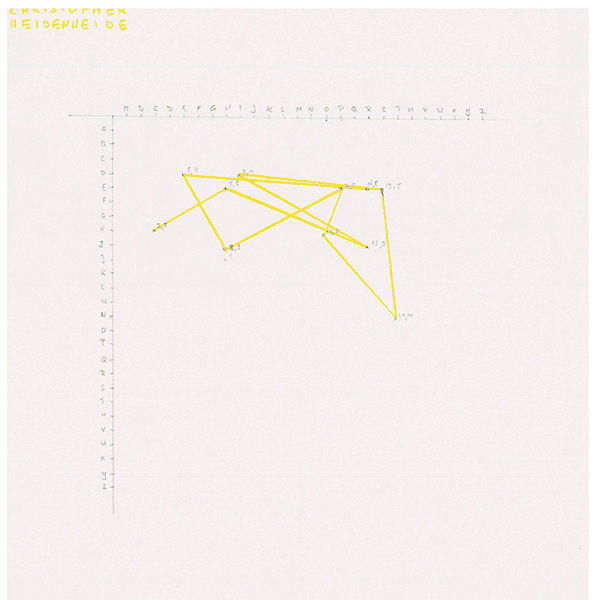Tobiaszimmer (talk | contribs) |
Tobiaszimmer (talk | contribs) |
||
| Line 57: | Line 57: | ||
==02.11.18== | ==02.11.18== | ||
===Art without author!? / Artists working with randomness=== | ===Art without author!? / Artists working with randomness=== | ||
Jackson Pollock <br> | Jackson Pollock <br> | ||
Gerhard Richter | [https://www.gerhard-richter.com/de/art/paintings/abstracts/colour-charts-12 Colour Charts] | [https://www.gerhard-richter.com/en/art/paintings/abstracts/colour-charts-12/4096-colours-6089/?&referer=search&title=4096&keyword=4096 4096 Colors] <br> | Gerhard Richter | [https://www.gerhard-richter.com/de/art/paintings/abstracts/colour-charts-12 Colour Charts] | [https://www.gerhard-richter.com/en/art/paintings/abstracts/colour-charts-12/4096-colours-6089/?&referer=search&title=4096&keyword=4096 4096 Colors] <br> | ||
Revision as of 08:56, 7 November 2018
Lecturer: Tobias Zimmer
Credits: 6 ECTS, 4 SWS
Date: Friday, 13:30 – 16:45
Venue: Marienstraße 7b, Raum 102
Description
Waiting at traffic lights, shopping online, finding a new partner, baking a cake - noticed or unnoticed, everyone is in contact with algorithms each day.
In the class Algorithmic Art we will focus on graphical algorithms and generative art, to learn how to think like a machine. The programming language Processing offers artists and designers the chance to go beyond predefined and often limiting software and allows them to create their very own tools for 2D or 3D graphics production, interactive installations, data manipulation and more. With a simplified syntax, Processing takes down high entry barriers that are usually associated with programming languages. Simple visual results are possible with just a few lines of code, with an open end to more complex output and rule systems.
We will orient ourselves to the pioneering work of early computer artists (”Algorists”) like Vera Molnar, Manfred Mohr or Frieder Nake and use a pen-plotter (self built in class or a ready-made one) to materialize the algorithms we develop in homeworks or in class. Treated topics and programming basics include: 2D shapes and geometry, variables, arrays, loops, randomness, noise, interaction, animation, functions, object orientation, working with data (image, sound, text),...
Further topics depending on interest:webcam interaction, openCV, working with libraries and API’s, 3D graphics, communication (OSC), projection mapping,…
Introductory Algorithm
Student Works
- Tobias Zimmer
- Christopher Heiden
- Baiyao Lin
- Ozan Akkoyun
- Grayson Daniel Bailey
- Leon Billerbeck
- Manuel Hartmann
- Yasmin Mukino
- Hilde Karin Braunschweig
- Joel Schäfer
- Lorenz Gunreben
Treated Topics
12.10.18
Intro
19.10.18
2D Geometry
26.10.18
variables iteration for loops
02.11.18
Art without author!? / Artists working with randomness
Jackson Pollock
Gerhard Richter | Colour Charts | 4096 Colors
Henri Michaux | Mescaline Drawings
John Cage | Music of Changes | I Ching (1)I Ching (2)
RAND Corporation | 1.000.000 Million Random Digits
Global Consciousness Project - Meaningful Correlations in Random Data | Website
Studio Nand | The Known Unknowns
translate() scale() rotate() arrays random()
